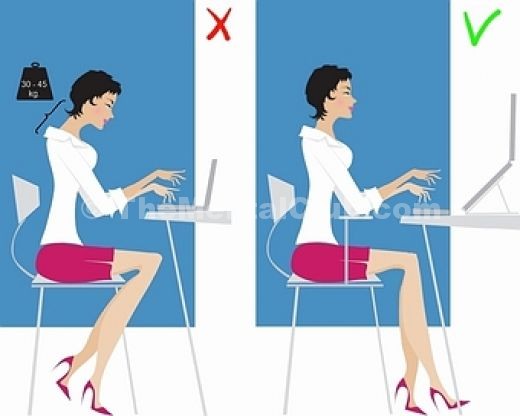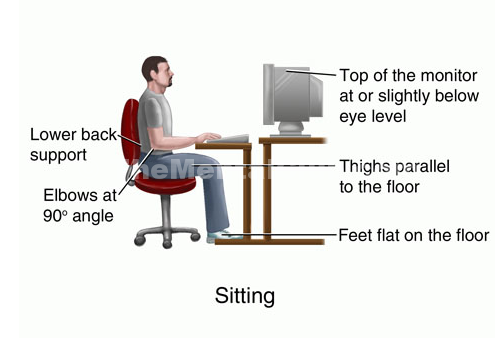Sit correctly at a Computer: The Pose of Sitting in front of our Computer. Hi friends, how are you? Today I will give you an idea of what should be our proper position in front of the computer? So, guys don’t waste your time and Look at this idea.
How to Sit correctly at a Computer?
Sitting at a computer for long periods of time can take a toll on your body. By not sitting with the correct posture, it is easy to end up with back pain, neck pain, knee pains, and a tingling of the hands and fingers. Here are some tips on maintaining good ergonomics and staying comfortable at your desk during the day.
How to Remove a Headache in Between 60 Seconds?
Note: A 2006 study indicated that rather than an up-right position a more relaxed one at 135 degrees is suggested to relieve lower back pain.
How about sitting posture in front of the computer?
1. Always have the screen and keyboard straight in front.
2. The screen must be positioned at your correct focal length so that your eyes can focus easily. You should never accept anyone else’s setting. All members of the family may need to position the screen differently.
3. Swap hands in using the mouse on alternate days. It is very useful for children to become ambidextrous in this way.
4. If you are a touch typist (and don’t need to watch the keys) the top of the screen should be just below eye-line. Any higher requires too much effort of the back of your neck to tilt your head back.
5. Keyboards are better flat or even held in the lap and tilted away from you (that is, not on the desk and tilted up at the back). This requires less cocking back of the wrists to keep the fingers clear.
6. Used on the desk, the keyboard should be such that your elbows are below 90 degrees when your fingertips are poised above the keys. Any higher and your elbows will be working in inner range, which is bad for them. A keyboard too high also places greatly added load on your shoulder-girdle to hoist your arms up higher.
7. Ergonomic chairs should have the back support positioned close in behind the back and the chair as close as possible to the desk. If the chair is too far away you will lose the benefits of the contoured padding as you lean forward to the screen. (This is a common failing of ergonomic chairs.)
8. The chair seat should be angled down a few degrees at the front. This encourages the lower back to maintain a better lumbar hollow (lumbar lordosis) which helps prevent the whole spine slumping in a crumpled ‘C’ shape.
9. Large inflatable plastic fit balls are ideal seating for computers, especially for children. Apart from the joyous bouncing romp that eliminates the static compression of the spinal base, the lack of back support means you must recruit your own tummy strength to keep upright. Thus they encourage proper spinal alignment and are ideal for young bodies learning the subliminal cues of postural awareness. They are a fraction of the price of ergonomic chairs and I’m convinced every household needs one.
10. Do the right-angled stretch at the end of each computer session. It undoes the hunched sitting posture and opens out the pinched-in birds’ wings arms to full stretch.
Tips to Sit Correctly In front of Your Computer?
· Make sure that your chair is at the right position to help prevent back problems in the future.
· It’s very important to stand and walk around while sitting for 30 minutes, because prolonged sitting can cause pelvic nerve pain. Also, years of prolonged sitting can lead to other health problems. That 1-2 minute break after 30 minutes isn’t that bad when it helps to prevent other pain and possible serious issues.
· If your wrist hurts frequently while typing try the Dvorak keyboard setup.
· Other techniques to reduce glare include use of optical glass glare filters, light filters, or secondary task lights
· Get a timer application to remind you when to take a break. Take the break when the timer goes off or immediately after the current task. If the task takes long than 10 mins to finish, take the 1-2 minute break.
· Avoid using excessively wide wrist rests, or wrist rests that are higher than the space bar of your keyboard.
· A way to stop eyestrain is the 20, 20, 20 rule. Every 20 minutes look at something 20 feet (6.1 m) away for 20 seconds.





































